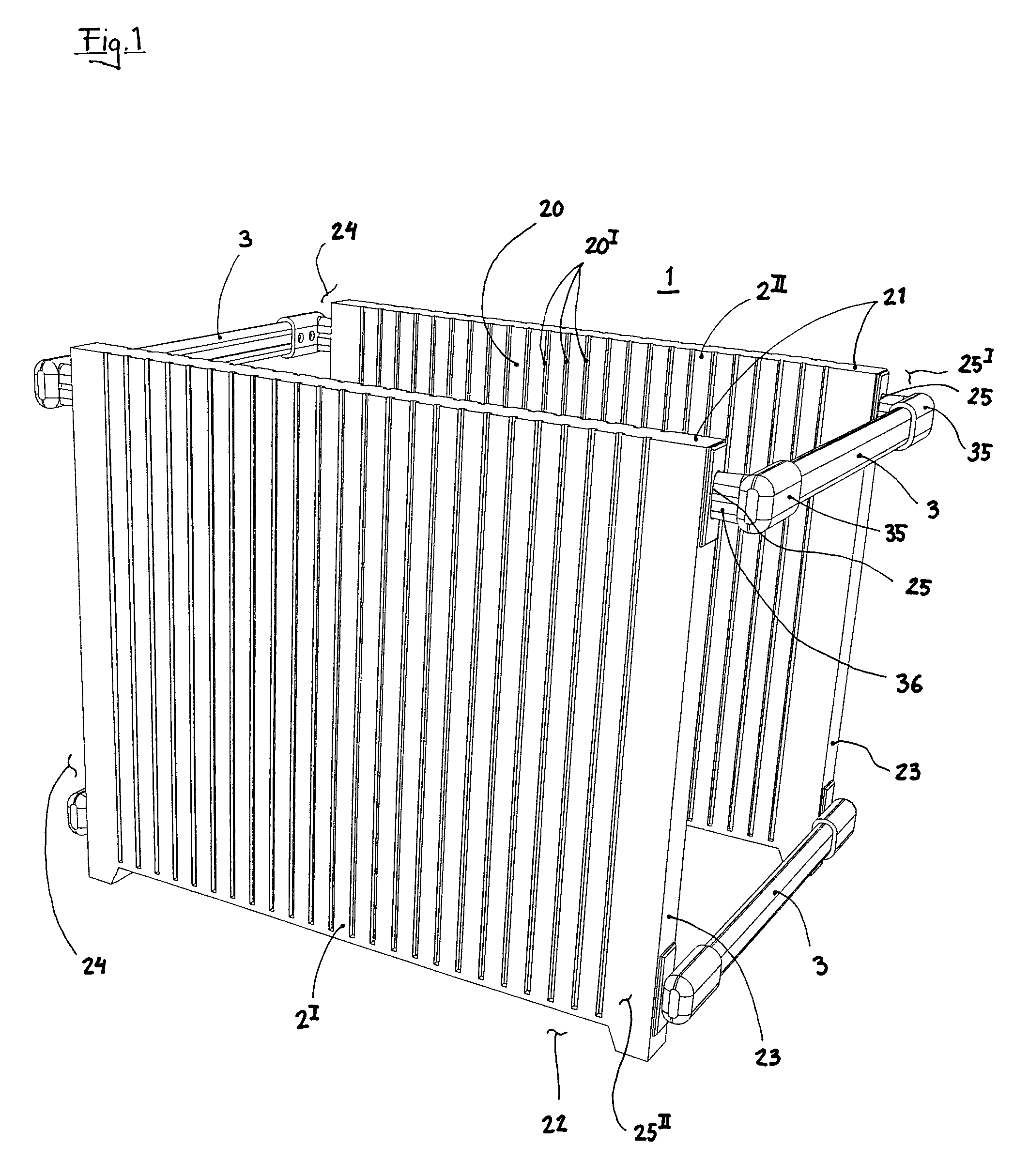Rack for transport and storage
a rack and rack technology, applied in the field of collapsible racks, can solve the problems of difficult to ensure the parallelity of the panels carrying difficult to ensure the parallelity of the panels, and difficulty in ensuring the quality of the printed circuit boards, so as to achieve the effect of reducing the number of moveable parts, cost-effective, and stable carrier for sensitive components
- Summary
- Abstract
- Description
- Claims
- Application Information
AI Technical Summary
Benefits of technology
Problems solved by technology
Method used
Image
Examples
Embodiment Construction
The invention is described further in connection to enclosed figures showing different embodiments of the invention whereby,
FIG. 1 shows, in perspective view, a collapsible rack 1 according to the invention.
FIG. 2 shows, in perspective blown view, an upper portion of a collapsible rack 1 according to the invention where a clutching section 36 and a hole 25 is parted.
FIG. 3 shows, in perspective blown view, an lower part of a collapsible rack 1 according to the invention where a coupler 35I and a coupler hole 25B is parted.
Accordingly, FIG. 1 shows a collapsible rack 1 for transport an storage. The collapsible rack 1 is provided with a first and a second panel 2I and 2II respectively and a plurality of distance bars 3. The first and second panel 2I and 2II respectively, have a groove side 20 provided with a number of grooves 20I intended for receiving printed circuit boards. The panels 2I and 2II respectively have first and second edges 21 and 22 respectively, arranged on opposite si...
PUM
 Login to View More
Login to View More Abstract
Description
Claims
Application Information
 Login to View More
Login to View More - R&D
- Intellectual Property
- Life Sciences
- Materials
- Tech Scout
- Unparalleled Data Quality
- Higher Quality Content
- 60% Fewer Hallucinations
Browse by: Latest US Patents, China's latest patents, Technical Efficacy Thesaurus, Application Domain, Technology Topic, Popular Technical Reports.
© 2025 PatSnap. All rights reserved.Legal|Privacy policy|Modern Slavery Act Transparency Statement|Sitemap|About US| Contact US: help@patsnap.com



